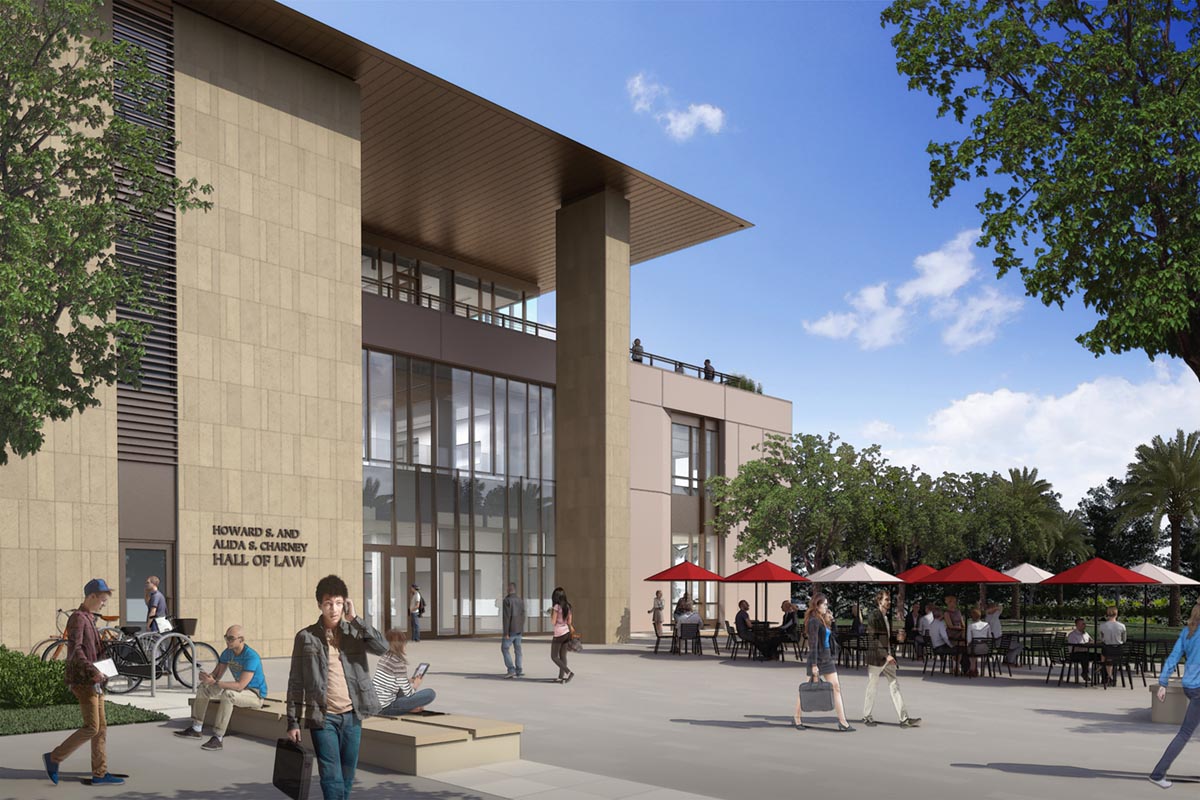Introduction & Purpose
In 2014, Howard Charney and his wife Alida Charney donated $10 million dollars to construct a new space for Santa Clara University School of Law. The building, which finished construciton in 2018, was named after the Charney family. Today, Charney Hall represents the newest space for Santa Clara University Law.
Within recent public memory, Charney Hall is unique in that it represents a law school building built entirely from the ground up. Questions arise, therefore, regarding the design of this 21st century law school. According to one of the building's major design firms, SCB, Charney Hall's "design complements the University’s traditional campus core, offering a contemporary take on the mission style while embracing the University’s Jesuit educational mission. The building’s design conveys transparency and inclusion, and incorporates sustainable strategies to create a low-impact, environmentally responsive building aligned with Jesuit ideals." Furthermore, information from Santa Clara Law's website conveys a similar message about transparency and inclusivity. Because law schools and the legal profession are generally viewed as opaque and exclusive institutions, these claims are particularly provocative.
The purpose of this exhibit, then, is to evaluate the above claims of transparency and inclusion within Charney Hall. This exhibit argues that while Charney Hall's design theory presents a prima facie case for transparency, many of the design decisions and policies do not in fact align with this ideal. Accordingly, this exhibit will feature numerous spaces within in Charney Hall, some that portray inclusivity and others that strongly discourage it. Additionally, this exhibit will rely on anecdotal experiences and testimony to supplement its larger argument. The aim of this exhibit is not to disparage Santa Clara Law, but to instead instigate a conversation about how the young law school can become more transparent in its design and purposes.

